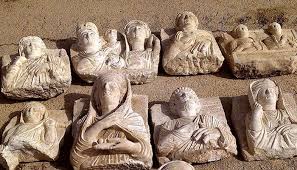ALBAFLAVENONE

A carbotricyclic compound that is (+)-epi-isozizaene in which the hydrogens at position 5 have been replaced by an oxo group.
(3S,3aR,6S)-| Formula |
C15H22O |
| Average Mass | 218.33460 |
A carbotricyclic compound that is (+)-epi-isozizaene in which the hydrogens at position 5 have been replaced by an oxo group.
| (+)-epi-isozizaen-5-one | |
|
(1R,2S,8S)- |
nmr
multiplicity chemical shift type
------------------------------------
D 0.88 1H
S 1.20 1H
D.D.D 1.66 1H
T 1.67 1H
D 1.79 1H
S 2.08 1H
T.T 2.10 1H
D 2.14 1H
D.Q.D 2.24 1H
T 2.25 1H
D 2.61 1H
D 2.84 1H
S 16.61 13C
S 18.66 13C
S 24.48 13C
S 29.33 13C
S 34.58 13C
S 37.09 13C
S 38.54 13C
S 39.03 13C
S 44.04 13C
S 44.74 13C
S 49.60 13C
S 140.92 13C
S 161.61 13C
S 207.88 13C
------------------------------------
D 0.88 1H
S 1.20 1H
D.D.D 1.66 1H
T 1.67 1H
D 1.79 1H
S 2.08 1H
T.T 2.10 1H
D 2.14 1H
D.Q.D 2.24 1H
T 2.25 1H
D 2.61 1H
D 2.84 1H
S 16.61 13C
S 18.66 13C
S 24.48 13C
S 29.33 13C
S 34.58 13C
S 37.09 13C
S 38.54 13C
S 39.03 13C
S 44.04 13C
S 44.74 13C
S 49.60 13C
S 140.92 13C
S 161.61 13C
S 207.88 13C
Albaflavenone biosynthetic pathway in S. coelicolor.
UV-visible absorption spectra of purified CYP170A1 in Tris-HCl buffer (50 mm, pH 8.2). A, oxidized absolute spectrum in solid line; reduced spectrum using Na2S2O4 in dashed line. B, reduced CO difference spectrum showing unique 440 nm compared with the normal reduced CO difference spectrum at 450 nm of CYP105D5. C, type I binding spectrum resulting from addition of epi-isozizaene (0–30 μm) to CYP170A1 (2.5 μm). The substrate epi-isozizaene structure is shown.
Click on image to view larger version.
Patent
GC-MS inveεtigations of the crude EtOAc extract revealed the presence of geosmin identified by compariεon with computerized library data. The characteristic odour of the broth was due to a mixture of geosmin and albaflavenone. The powerful odour of pure albaflavenone is best described as earthy-camphor-like.
Table 1
NMR data of albaflavenone
Pos. *c *H J ROE
1 51.88
2 33.3d 2.20 6.8 13.27.3 H(3a), H(3b)
103a 47.4t 2.40 7.3 17.3 H(2), H(3b)
3b 2.02 13.2 17.3 H(2), H(3a), H(12)
4 207.4ε
5 138.8ε
6 153.0s
157 42.7s
8 46.2d 1.91 6.85.4 H(9b) , H(lla) , H(14) , H(15)
9a 24.4t 1.75 3.56.811.4 13.8 H(14), H(8), H(10b)
9b 1.79 9.16.3 1.8 13.8 H(8), H(10a), H(lla)
2010a 29.6t 1.61 6.3 11.4 11.3 H(lla), H(9a), H(10b)
10b 1.39 2.39.111.3 H(10a), H(9b)
11a 37.Ot 1.70 5.4 10.9 H(9a), H(10a), H(llb) lib 1.56 1.810.92.3 H(lla), H(14)
12 14.2q 1.07 6.8 H(2), H(3a), H(3b)
2513 13.Oq 2.09 H(15), H(14)
14 28.3q 1.15 H(llb) , H(8) , H(13) , H(15)
15 24.5q 1.12 H(14), H(13), H(8), H(9b)
0 Spectra were measured in CDC13 solution at 600 MHz for protonε and at 150.9 MHz for carbon. Chemical shifts are expressed in ppm relative to internal TMS and J in Hz. Biological activity
Pure albaflavenone was active against Bacillus subtilis . In the serial dilution assay the MIC for albaflavenone was determined as 8 ~ 10 μg/ml. Further studies of the antimicrobial activity are in progreεε.
Discussion
The εtrain DSM 5415 waε characteriεed by a novel morphology, which has not previously been described for a streptomycete. Long ropeε of mycelium and εpore chains were formed on a range of media. A further isolate, DSM 6012 was found with the εa e morphology. Studieε of this strain are in progress. Strain DSM 5415 had an atypical menaquinone composition. Major amounts of MK9(H4) were detected. Broth cultures of DSM 5415 had a strong and characteristic odour originating from the seεquiterpenes geosmin and albaflavenone. The latter is an unusual, odorous, volatile metabolite with antibacterial activity.
REFERENCES
1) Gerber, N.N.: Volatile subεtanceε from Actinomyceteε: their role in the odour pollution of water. C.R.C. Crit.
5 Rev. Microbiol. 7: 191-214, 1979.
2) Weet, J.; W.Y. Huang & J.L. Laεeter: Streptomyces εp: a εource of odorous substanceε in potable water. Water, Air and Soil Pollution 11: 217-223, 1979.
10
3) Buttery, R.G. & J.A. Garibaldi: Geoεmin and methyliso- borneol in garden soil. J. Agric. Food Chem. 24: 1246- 1247, 1976.
15 4) Gerber, N.N. : Three highly odorous metabolites from an actinomycete: 2-iεopropyl-3-methoxy-pyrazine, methyliso- borneol and geosmin. J. Chem. Ecol. 3: 475-482, 1977.
5) Gerber, N.N. : Sesquiterpenoids from actinomycetes: cadin- 20 4-ene-l-ol. Phytoche istry 10: 185-189, 1971.
6) Gerber, N.N. : Sesquiterpenoids from actinomycetes. Phyto¬ chemistry 11: 385-388, 1972.
25 7) Dougherty, J.D.; R.D. Campbell & R.L. Morris: Actinomy¬ cete: isolation and identification of agent responsible for musty odors. Science 152: 1372-1373, 1966.
8) Koe, B.K.; B.A. Sobin & W.D. Celmer: PA 132, a new 30 antibiotic. I. Isolation and chemical properties.
Antibiot. Annu. 672~675, 1956-1957.
9) Cane, D.E.; J.S. Oliver, P.H.M. Harrison, C. Abell, B.R. Hubbard, C.T. Kane & R. Lattman: Biosynthesis of penta-
35 lenene and pentalenolactone. J. Am. Chem. Soc. 112: 4513- 4524, 1990.
10) Williams, S.T. & Wellington, E.M.H. (1982).: Actinomy¬ cetes, Ch 4_5, pp 969-987. In: "Methods of Soil analysis".
40 Part 2. Chemical and Microbiological Properties. 2nd edit (A I Page, R H Miller and D R Keeney, edε) . Amer. Soc. Agronomy Soil Science Soc. America Inc. Pub. Madison, Wisconεin, USA.
45 11) Hirsch, C.F. & D.L. Chriεtensen: Novel method for selec¬ tive isolation of actinomycetes. Appl. Env. Microbiol. 46: 925-929, 1983.
12) Williams, S.T.; M. Goodfellow, E.M.H. Wellington, J.C. 50 Vickers, G.Alderson, P.H.A. Snealh, M.J. Sackin & A.M.
Mortimer: A probability matrix for identification of some streptomycetes. J. Gen. Microbiol. 129: 1815-1830, 1983.
13) Stackebrandt,E. , D. Witt, C. Kemmerling, R. Kroppenstedt 55 & W. Liesack; Deεignation of εtreptomycete 16S and 23S rRNA-based target regions for oligonucleotide probes. Appl. Env. Microbiol. 57 (5) : 1468-1477, 1991. 14) Staneck, J.L. & G.D. Roberts: Simplified approach to identification of aerobic actinomycetes by thin layer chromatography. Appl. Microbiol. 28: 226-231, 1974. 15) Williams, S.T., M. Goodfellow & G. Alderson. : Genuε Streptomyceε Waksmans & Henrici 1943, 339AL, pp. 2452- 2492. In Bergey'ε manual of εystematic bacteriology, vol. 4. Ed S.T. Williams, M.E. Sharp and J.G. Holt, The Williams & Wilkins Co., Baltimore, 1989.
16) Bax, A. & S. Subraminian: Senεitivity-enchanced two- dimenεional heteronuclear shift correlation NMR-spectro- εcopy. J. Magn. Res. 67: pp. 565-569, 1986.
17) Stavely, H. E. & G. N. Bollenback: Steroids with Double Bonds between Quaternary Carbon Atoms. I. The Oxidation of α-Ergostenyl Acetate. J. Am. Chem. Soc. 65:1285-1289, 1943.
18) Neuhauε, D. & M. P. Williamson: The Nuclear Overhauser Effect in Structural and Conformational Analysis. VCH Publisherε Inc. Weinhein: 378, 1989.
18) Anderεen, N.H. , Smith, S.E. & Ohta, Y. : Rearrangement of Zizaene-related Sesquiterpenes. J.C.S. Chem.Comm.447-448, 1973.
The
first total synthesis of albaflavenone, a novel antibiotic
sesquiterpene, has been accomplished via the concise construction of its
zizaene skeleton utilizing sequential intramolecular aldol condensation
followed by chemo- and diastereoselective reduction of the conjugated
carbon–carbon double bond. This synthetic work was completed in nine
steps from 2-cyclopenten-1-one as a starting material without the use of
protecting groups and with high stereocontrol. In addition, the
absolute configuration of naturally occurring albaflavenone was
determined to be 1R,2S and 8S.
Concise Total Synthesis of Albaflavenone Utilizing Sequential Intramolecular Aldol Condensation: Determination of Absolute Configuration
School of Life Sciences, Tokyo
University of Pharmacy and Life Sciences, 1432-1 Horinouchi, Hachioji, Tokyo 192-0392, Japan
Org. Lett., 2014, 16 (24), pp 6397–6399
DOI: 10.1021/ol503202d
CLIPS
Mass fragmentation pattern
Intensity:10V
Intensity:20V
Intensity:40V
References
////// http://www.nature.com/ja/journal/v68/n4/full/ja2014138a.html
O=C1CCC23C1=CCC(C3)CC2
C[C@H]1CC(=O)C2=C(C)C(C)(C)[C@H]3CC[C@@]12C3







 .
.


///////////
- J Ind Microbiol Biotechnol. 2014 Feb;41(2):219-32. (PMID 24322202)
- Methods Enzymol. 2012;517:279-300. (PMID 23084944)
| Biosynthesis of the sesquiterpene antibiotic albaflavenone in Streptomyces coelicolor A3(2). The Journal of biological chemistry 283, 8183-8189 [PubMed:18234666] [show Abstract] |
| Biosynthesis of the sesquiterpene antibiotic albaflavenone in Streptomyces coelicolor. Mechanism and stereochemistry of the enzymatic formation of epi-isozizaene. Journal of the American Chemical Society 131, 6332-6333 [PubMed:19385616] [show Abstract] |
| Crystal structure of albaflavenone monooxygenase containing a moonlighting terpene synthase active site. The Journal of biological chemistry 284, 36711-36719 [PubMed:19858213] [show Abstract] |
| Concise total synthesis of albaflavenone utilizing sequential intramolecular aldol condensation: determination of absolute configuration. Organic letters 16, 6397-6399 [PubMed:25469861] [show Abstract] |
| Albaflavenone, a sesquiterpene ketone with a zizaene skeleton produced by a streptomycete with a new rope morphology. The Journal of antibiotics 47, 434-439 [PubMed:8195043] [show Abstract] |
| Characterization of a silent sesquiterpenoid biosynthetic pathway in Streptomyces avermitilis controlling epi-isozizaene albaflavenone biosynthesis and isolation of a new oxidized epi-isozizaene metabolite. Microbial biotechnology 4, 184-191 [PubMed:21342464] [show Abstract] |
| Investigating conservation of the albaflavenone biosynthetic pathway and CYP170 bifunctionality in streptomycetes. The FEBS journal 279, 1640-1649 [PubMed:22151149] [show Abstract] |
O=C1CCC23C1=CCC(C3)CC2
C[C@H]1CC(=O)C2=C(C)C(C)(C)[C@H]3CC[C@@]12C3
Palmyra
City in Syria
Palmyra
is an ancient Semitic city in present-day Homs Governorate, Syria.
Archaeological finds date back to the Neolithic period and the city was
first documented in the early second millennium BC. Wikipedia


///////////